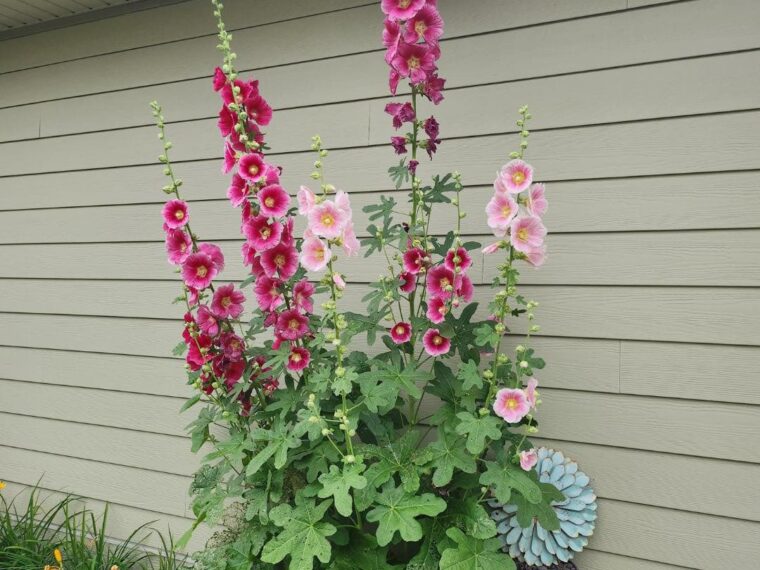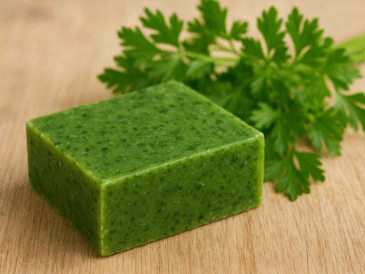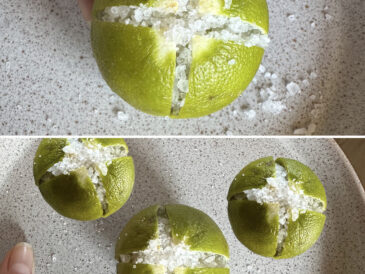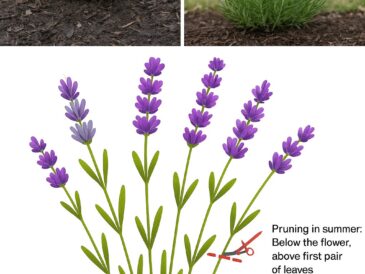🥗 How to Eat and Use Every Part of the Hollyhock Plant
⚠️ Note: Always use plants grown organically (no pesticides or herbicides). Introduce new plants to your diet slowly, and consult with a health professional if you’re pregnant, breastfeeding, or taking medication.
🌸 1. Flowers
- How to Eat: Use the petals fresh in salads, as edible garnishes, or steeped in tea.
- Taste: Mild, slightly sweet, similar to hibiscus.
- Health Benefits: Rich in mucilage, they help soothe sore throats and irritated digestive tracts.
💡 Try drying the petals and using them in homemade herbal tea blends.
🍃 2. Leaves
- How to Eat: Young, tender leaves can be steamed, sautéed, or added to soups and stews.
- Taste: Mild, similar to spinach or grape leaves.
- Bonus Use: Large leaves can be used to wrap food, like grape leaves in dolmas.
📚 In traditional Middle Eastern herbalism, hollyhock leaves are used topically for inflamed skin and internally for soothing the gut.
🌰 3. Seeds
- How to Eat: The seeds are technically edible, though not commonly eaten due to their fibrous texture. They can be crushed and added to flour or used in infusions.
- Other Uses: Let some dry on the stalk for reseeding your garden naturally.
🌱 4. Roots
- Medicinal Use: Similar to marshmallow root, hollyhock roots contain mucilage that’s excellent for soothing sore throats, coughs, and irritated stomachs.
- How to Use: Wash, dry, and steep in hot water to make a calming herbal tea or syrup.
📖 A 2011 study in the “Journal of Ethnopharmacology” noted that plants high in mucilage (like hollyhock) have strong demulcent and anti-inflammatory effects.
🌿 How to Grow Hollyhocks
🪴 Growing Tips:
- Soil: Well-draining, average to rich soil
- Sunlight: Full sun (at least 6 hours/day)
- Spacing: 18–24 inches apart
- Watering: Regular watering, especially during dry spells
- Staking: Tall varieties may need support
🌱 Planting:
- Sow seeds directly outdoors in late spring or early summer.
- Or start indoors 6–8 weeks before the last frost.
- Hollyhocks are biennials, so they flower in their second year, but may bloom the first year in some climates.
🧠 Tip: Let some flowers go to seed — they’ll reseed themselves and return naturally year after year.
🧼 DIY Skin Remedies with Hollyhocks
- Flower Soak: Steep petals in hot water and add to a warm bath to soothe dry or irritated skin.
- Soothing Compress: Make a cooled tea from flowers or leaves and apply with a cloth to inflamed skin.
- Natural Toner: Use a cooled infusion of petals as a gentle, natural skin toner for sensitive skin.
✅ Conclusion: A Powerhouse Plant Worth Growing
Hollyhocks are not just showy garden plants — they’re pollinator-friendly, medicinal, and completely edible. From soothing teas to skin balms and garden beauty, this plant does it all. If you’re looking for a low-maintenance plant that offers both form and function, hollyhocks deserve a place in your garden — and possibly in your kitchen too.




